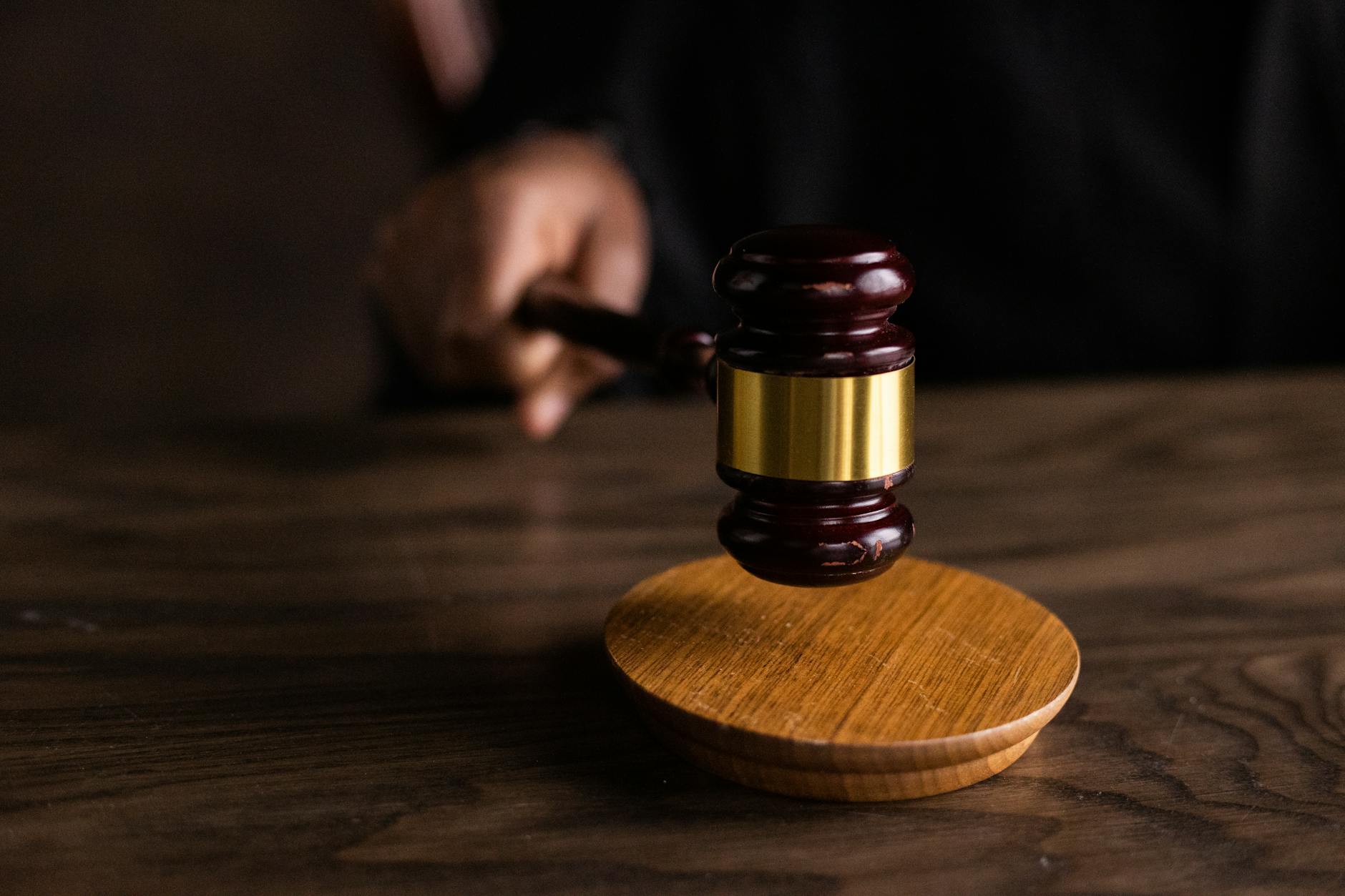Pistol Stabilizing Brace Ban: What Gun Owners Need To Know
Pistol Stabilizing Brace Ban: What Gun Owners Need to Know
Is the Pistol Stabilizing Brace Ban a legitimate threat to your Second Amendment rights? For millions of gun owners, the recent legal battle over this controversial regulation has finally seen a significant victory. In a landmark decision, a federal court in the Northern District of Texas has enjoined the ATF’s rule that would have reclassified pistols with stabilizing braces as short-barreled rifles, subjecting them to stringent regulations and taxation.
This isn’t just a win for the NRA and its members; it’s a pivotal moment for all gun enthusiasts who rely on these braces, especially those with disabilities. Judge Sam A. Lindsay’s ruling highlights the ATF’s failure to follow proper procedures, including ignoring a vast number of public comments. This decision underscores the importance of legal challenges in protecting gun rights against overreaching regulations.
For the latest updates, watch HUGE NEWS: Down Goes ATF’s Pistol Brace Rule, and stay informed about how this ruling impacts your rights and what’s next in the ongoing fight for gun ownership freedom.
Background on Pistol Stabilizing Braces
Pistol stabilizing braces are an important topic that every gun owner should get acquainted with, especially with the ongoing debates and legal battles surrounding them. These devices were designed to help shooters, particularly those with disabilities, use pistols more effectively.
What Are Pistol Stabilizing Braces?
Pistol stabilizing braces, often simply called “braces,” are devices that attach to the back of a pistol. They were invented to improve the stability and accuracy of shooting a pistol with one hand. The brace typically straps to the shooter’s forearm, allowing for better control and reducing recoil.
The Inception and Rise in Popularity
The first pistol stabilizing brace was designed by Army veteran Alex Bosco in 2012. Bosco created the device to help a disabled combat veteran shoot safely. He sent the design to the ATF for approval, and it was initially accepted. This pivotal moment allowed many companies to begin producing their versions of the brace, and it quickly gained popularity among gun enthusiasts.
Key reasons for their popularity include:
- Enhanced Stability: Braces provide additional support, making it easier to shoot accurately.
- Accessibility: They are especially beneficial for people with disabilities who might struggle with traditional pistols.
- Versatility: Many gun owners appreciate the added versatility that braces offer in different shooting situations.
Legal Challenges and Controversies
Despite their benefits, pistol stabilizing braces have been at the center of legal controversies. The ATF has had changing positions on whether these devices transform pistols into short-barreled rifles, which are subject to stricter regulations under the National Firearms Act (NFA). This has led to significant confusion and a series of legal battles.
For a more detailed history of these legal changes, you can check out the history of pistol braces and how they have been impacted by the changing gun laws in the U.S.
Impact on Gun Owners
Gun owners across the United States have felt the impact of these legal ambiguities. On one hand, stabilizing braces have made shooting more accessible and enjoyable for many. On the other hand, the legal uncertainties have put many at risk of unknowingly breaking the law.
In conclusion, understanding the background and evolution of pistol stabilizing braces is crucial. The ongoing legal battles underscore the need for clear and consistent regulations that respect the rights of gun owners while ensuring public safety.
The ATF’s Pistol Brace Rule
The ATF’s stance on pistol braces has been a rollercoaster, with gun owners feeling the impact of changing regulations. Here’s a breakdown of how the ATF initially classified these devices and the final rule that caused a major uproar.
Initial Classification and Regulations
Pistol stabilizing braces first caught the attention of the ATF back in 2012. Initially, these devices were designed to help disabled veterans and others with mobility issues stabilize their firearms. The ATF’s initial classification was relatively straightforward: they determined that pistol braces did not transform pistols into short-barreled rifles.
Key points about the initial classification:
- Purpose: Designed to aid individuals with disabilities.
- Regulation: Classified as a legal accessory that does not change the firearm’s classification.
- Use: Users could attach these braces to pistols without additional registration or taxation.
However, the popularity of these braces among the general gun-owning public led to increased scrutiny.
For more detailed historical context, check out the ATF’s initial classification of pistol braces.
The Final Rule and Its Impact
In January 2023, the ATF issued the “Final Rule” on pistol braces, dramatically altering their stance. This new regulation stated that pistols equipped with certain stabilizing braces would now be classified as short-barreled rifles. This reclassification meant that these firearms would fall under the National Firearms Act (NFA), subjecting them to strict regulations, including registration and a $200 tax stamp.
Requirements under the Final Rule:
- Registration: Owners must register their braced pistols as short-barreled rifles.
- Taxation: A $200 tax stamp is required for each registered firearm.
- Penalties: Non-compliance could result in severe penalties, including fines and imprisonment.
The new rule had a profound impact, particularly on those who had previously purchased braces in good faith. Many gun owners were now faced with tough choices: comply with the new regulations, alter or destroy their braces, or risk legal consequences.
For a comprehensive look at the ATF’s Final Rule on pistol braces, you can visit the official document.
This regulatory shift caused a significant backlash among the firearm community, leading to legal challenges and considerable debate over the balance between public safety and individual rights.
 Photo by Ann H
Photo by Ann H
Understanding these regulations is crucial for gun owners to ensure they remain compliant and avoid severe penalties. The evolving legal landscape around pistol stabilizing braces continues to be a critical issue for the Second Amendment community.
Legal Challenges Against the Ban
The regulation of pistol stabilizing braces has seen numerous legal battles, with several pivotal cases shaping the current landscape. Gun owners have fought back fiercely, emphasizing their Second Amendment rights and seeking legal remedies against what they view as government overreach.
NRA’s Legal Battle
The National Rifle Association (NRA) has been at the forefront of the legal fight against the ATF’s pistol brace rule. In July 2023, the NRA filed a lawsuit in the Northern District of Texas, targeting the ATF, the U.S. Department of Justice, and Steven M. Dettelbach, the ATF’s director. Their aim was to stop the enforcement of a rule they deemed unconstitutional.
 Photo by KATRIN BOLOVTSOVA
Photo by KATRIN BOLOVTSOVA
Key Arguments by the NRA:
- Unconstitutional Rule Change: The NRA argued that the ATF’s new rule violated constitutional rights, as it dramatically changed the status of pistol braces without clear legislative authority.
- Association Standing: Judge Sam A. Lindsay recognized the NRA’s right to represent its members, highlighting the NRA’s role in protecting gun rights for millions.
- Lack of Proper Procedure: The court noted that the ATF failed to conduct an appropriate notice-and-comment period, ignoring vast public opposition to the rule.
The court’s decision to enjoin the rule has protected millions of NRA members from having to modify, destroy, or register their firearms under the new regulations. This injunction is a significant win for those who rely on pistol braces for safe and accurate shooting, including many disabled veterans.
Other Significant Cases
While the NRA’s lawsuit was a landmark case, other significant legal battles have also shaped the fight against the pistol brace ban. One of the most notable cases is Mock v. Garland.
Mock v. Garland:
- Background and Claims: This case was brought by the Firearms Policy Coalition and other plaintiffs against the ATF’s rule that reclassified pistols with stabilizing braces as short-barreled rifles. The plaintiffs argued that the rule change was arbitrary and capricious, and violated the Administrative Procedure Act.
- Court’s Holding: In this case, the Fifth Circuit Court of Appeals held that the ATF did not follow the proper procedural requirements, echoing the arguments made in the NRA case. The court criticized the ATF for failing to properly consider the public’s feedback and for making substantial changes to the rule without adequate justification.
You can read more about the Mock v. Garland case and its implications on FindLaw.
These legal challenges highlight the ongoing battle between regulatory agencies and gun rights advocates. With courts often siding with the latter, it’s clear that the judiciary plays a crucial role in checking regulatory overreach and protecting constitutional freedoms.
By staying informed on these cases, gun owners can better understand their rights and the evolving legal landscape surrounding pistol stabilizing braces.
The Northern District of Texas Ruling
The Northern District of Texas recently delivered a significant ruling that has profound implications for gun owners and the NRA. This section explores the reasoning behind the court’s decision and its immediate effects.
Reasoning Behind the Decision
 Photo by juan mendez
Photo by juan mendez
The court, led by Judge Sam A. Lindsay, found that the ATF had failed to adhere to proper legal procedures when implementing its pistol brace rule. This decision was significantly influenced by the ATF’s failure to conduct a proper notice-and-comment period, which is a key requirement under the Administrative Procedure Act (APA).
The ATF’s rule aimed to reclassify pistols with stabilizing braces as short-barreled rifles, subjecting them to stringent regulations under the National Firearms Act (NFA). However, the court found that the ATF did not sufficiently address the hundreds of thousands of comments submitted by concerned citizens and organizations like the NRA. Many of these comments were highly critical of the proposed changes.
Judge Lindsay’s ruling highlighted that the ATF’s process was flawed and insufficient. The court emphasized that public participation in the rule-making process is crucial and that ignoring this step undermines the legitimacy of regulatory actions. This decision underscores the importance of procedural fairness and transparency in government regulations.
For more details, you can read the full court decision here.
Immediate Effects of the Ruling
The ruling has immediate and far-reaching effects, particularly for gun owners and NRA members. First and foremost, the court’s decision enjoins the ATF from enforcing its pistol brace rule against NRA members. This means that millions of gun owners who are part of the NRA are temporarily protected from having to comply with the new, stringent requirements.
Key immediate effects include:
- Relief from Registration: NRA members are not required to register their pistols with braces as short-barreled rifles.
- Avoidance of Penalties: Gun owners are shielded from potential fines and prison sentences that could arise from non-compliance.
- Protection for Disabled Veterans: Many disabled veterans who rely on stabilizing braces to safely use their firearms are particularly relieved by this ruling.
The ruling also sets a precedent for similar legal battles. Other courts may look to this decision when considering the legality and procedural soundness of regulatory actions by the ATF and other agencies.
For a broader perspective on the impact of this ruling, check out this article from The Texan.
In conclusion, the Northern District of Texas’ ruling is a crucial win for gun rights advocates and underscores the necessity for government agencies to follow due process. The decision not only provides immediate relief to NRA members but also reinforces the importance of procedural integrity in regulatory actions.
Reactions and Implications
The recent ruling on the pistol stabilizing brace ban has sparked a myriad of reactions and posed several implications for various stakeholders. This section dives into the responses from the NRA, ATF, and gun owners and explores the broader effects on gun regulations and Second Amendment rights.
NRA’s Response
The NRA celebrated the court’s decision as a major victory for gun owners and Second Amendment rights. NRA President Charles Cotton emphasized the significance of this win, stating, “From day one, we vowed to fight back against President Biden and his rogue regulators – and to defeat this unlawful measure.” With the ruling in their favor, the NRA views this as a validation of their ongoing efforts to protect gun rights.
William A. Brewer III, counsel for the NRA, also highlighted the importance of this victory: “The NRA has emerged as a leading voice in opposition to this unlawful attempt to limit Second Amendment freedom. When it was determined NRA members could not benefit from other injunctions, the Association moved to the tip of the spear in the advocacy and prevailed in obtaining sweeping relief for its members.”
ATF and Government Response
In contrast, the ATF expressed disappointment with the ruling and indicated that they might explore further legal avenues. An ATF spokesperson stated, “We respectfully disagree with the court’s decision and are reviewing our options, including potential appeals. Our goal remains to uphold regulations that we believe are essential for public safety.”
The government also has a stake in this issue, with some officials supporting the ATF’s stance. For instance, Rep. Jennifer McClellan voted to uphold the ATF’s rule, stating that it would strengthen gun laws and reclassify certain pistols as short-barreled rifles, thereby imposing stricter regulations.
For more insights on the ATF’s stance and potential actions, visit this detailed article.
Impact on Gun Owners
The ruling has immediate and significant implications for gun owners, especially those using pistol braces. Here’s how the ruling affects them:
- Protection from Penalties: NRA members are temporarily protected from the enforcement of the ATF’s new rule, which means they won’t face fines or prison sentences for using pistol braces.
- Relief from Registration: Gun owners don’t need to register their braced pistols as short-barreled rifles, avoiding the cumbersome registration process and associated $200 tax stamp.
- Support for Disabled Veterans: Many disabled veterans who rely on pistol braces for stability and safe use of their firearms benefit greatly from this ruling. The decision acknowledges the importance of these devices in helping individuals with disabilities.
This decision not only provides immediate relief but also sets a precedent for future legal challenges. By protecting the rights of gun owners, the ruling reinforces the importance of clear and consistent regulations that respect the Second Amendment.
For a broader perspective on the impact of this ruling, you can read more about the negative reactions to the ATF’s brace ban proposal.
In summary, the reactions and implications of the pistol stabilizing brace ban ruling are profound. The NRA’s triumphant response contrasts starkly with the ATF’s disappointment, and the decision significantly impacts gun owners, particularly those relying on these braces for safe firearm use. Understanding these dynamics is crucial for anyone following the ongoing battles over gun regulations and Second Amendment rights.
Future of Pistol Stabilizing Braces
The future of pistol stabilizing braces is currently in a state of flux due to recent legal rulings and ongoing legislative debates. For those who rely on these devices for stability and safety, understanding the potential changes and challenges is crucial.
Potential Legislative Changes
 Photo by Google DeepMind
Photo by Google DeepMind
The legislative landscape concerning pistol stabilizing braces is subject to significant changes at both federal and state levels. Here’s what to keep an eye on:
- Federal Legislation: The recent legal victories against the ATF’s rule have sparked discussions in Congress. Some lawmakers are pushing for bills that could either solidify the ban or protect the rights of gun owners. For instance, H.J. Res. 44 seeks to overturn the ATF’s rule, advocating for increased scrutiny for those purchasing stabilizing braces.
- State Legislation: States may also take independent actions. Some states might follow the federal lead, while others could implement their own regulations. For example, states with strict gun control laws might impose their own bans or restrictions on pistol braces, whereas more gun-friendly states could pass laws protecting their use.
- Potential Compromises: There is also the possibility of compromise legislation that strikes a balance between safety concerns and gun rights. These compromises could include additional background checks specifically for brace purchases or restrictions on certain types of braces.
Ongoing Legal Challenges
Legal battles over pistol stabilizing braces are far from over. Several significant cases continue to shape the landscape:
- Mock v. Garland: This case, brought by the Firearms Policy Coalition, challenges the ATF’s rule on the grounds that it is arbitrary and capricious. The plaintiffs argue that the rule change violates the Administrative Procedure Act. The case’s outcome could have a major impact on the future enforcement of the ATF’s regulations.
- NRA v. ATF: Following their recent victory, the NRA remains vigilant. They are prepared to take further legal action if necessary to protect their members from what they view as unconstitutional overreach by the ATF. Their efforts have already resulted in significant protection for NRA members and could set a precedent for future cases.
- Other Cases: Numerous other lawsuits are also in play, challenging the ATF’s rule from various angles. These cases collectively emphasize the continued legal uncertainty surrounding pistol stabilizing braces. For more on these legal challenges, this article provides a comprehensive overview.
The legal landscape is rapidly evolving, and these ongoing challenges highlight the contentious nature of the debate over pistol stabilizing braces. Gun owners should stay informed about these developments to navigate the complexities of current and future regulations.
Conclusion
The ruling from the Northern District of Texas represents a monumental shift in the ongoing battle over the pistol stabilizing brace ban. This decision not only halts the ATF’s rule but also underscores the necessity for regulatory bodies to follow proper legislative procedures. For gun owners, especially those with disabilities, this ruling is a beacon of hope, ensuring their rights are safeguarded against abrupt regulatory changes.
This victory illustrates the power of collective legal action and the importance of judicial oversight in protecting constitutional freedoms. As the fight for Second Amendment rights continues, this ruling could serve as a pivotal reference point in future legal battles, setting a precedent that ensures regulatory actions are both fair and legally sound.
Gun owners must remain vigilant and informed as the legal landscape evolves, knowing that their rights rely on continued advocacy and legal scrutiny.












